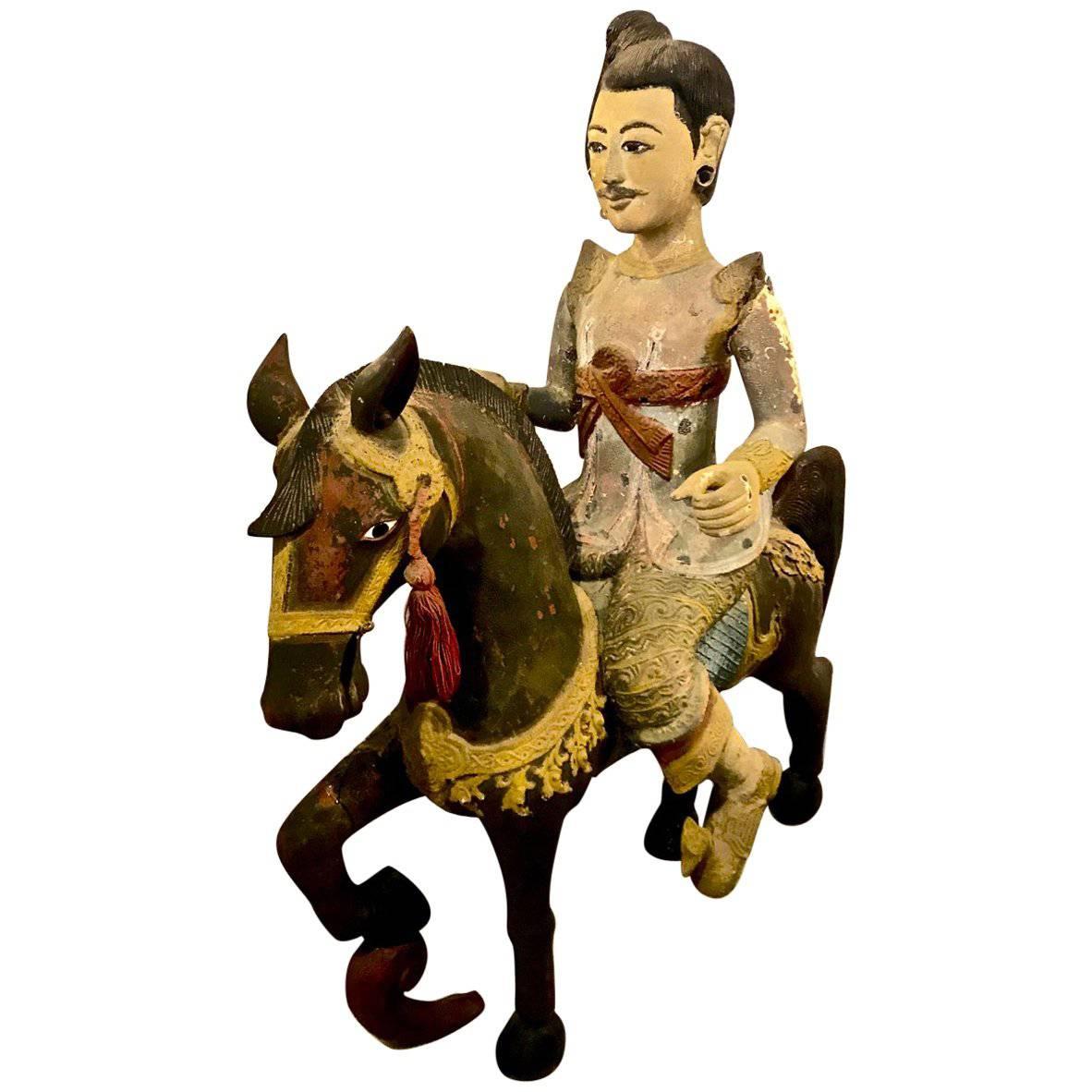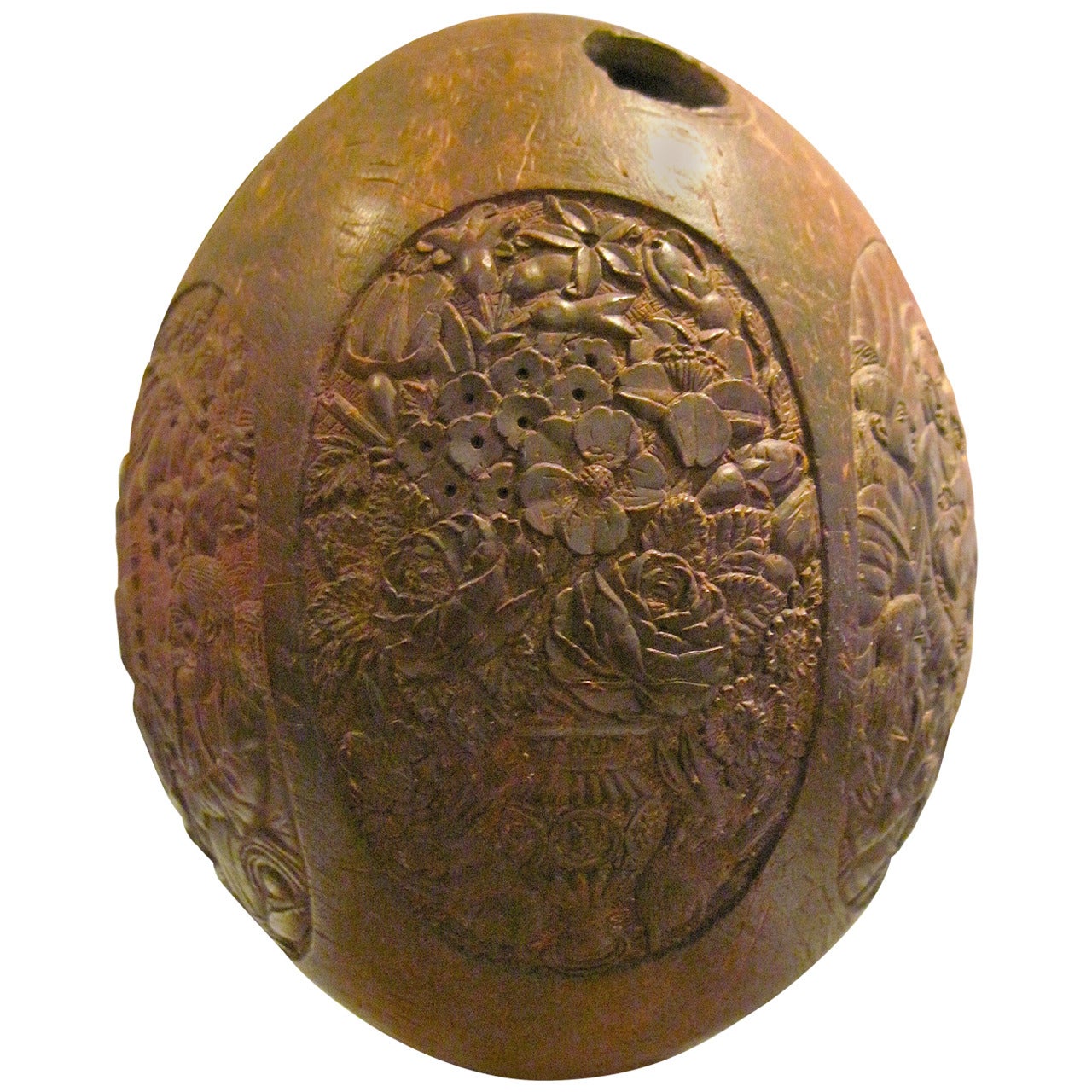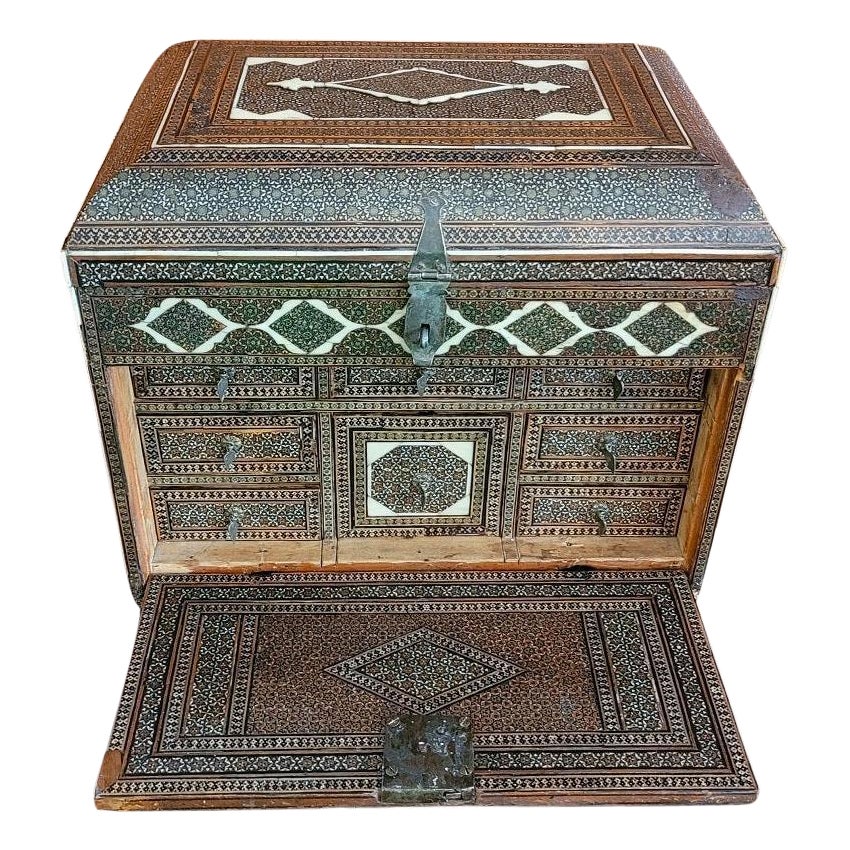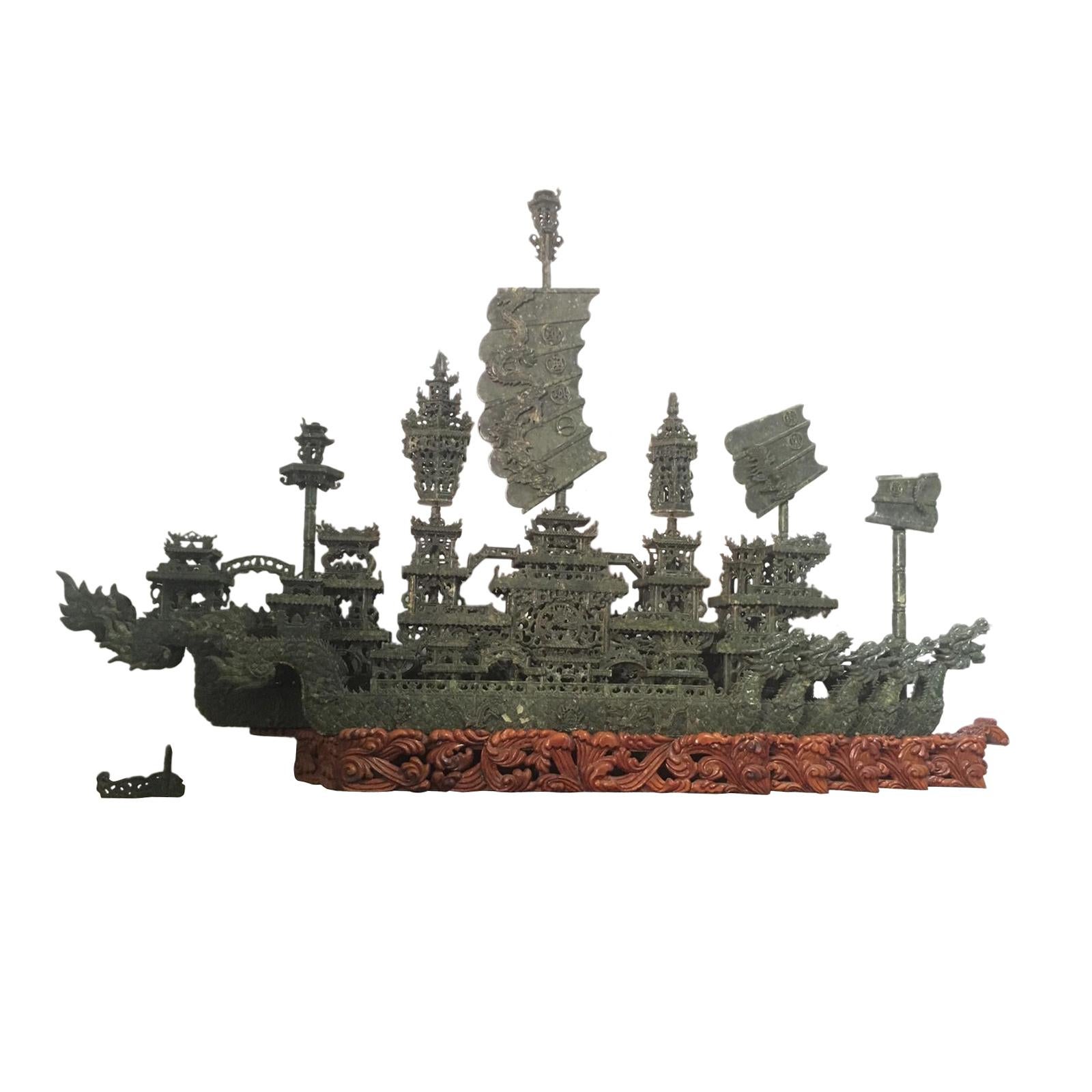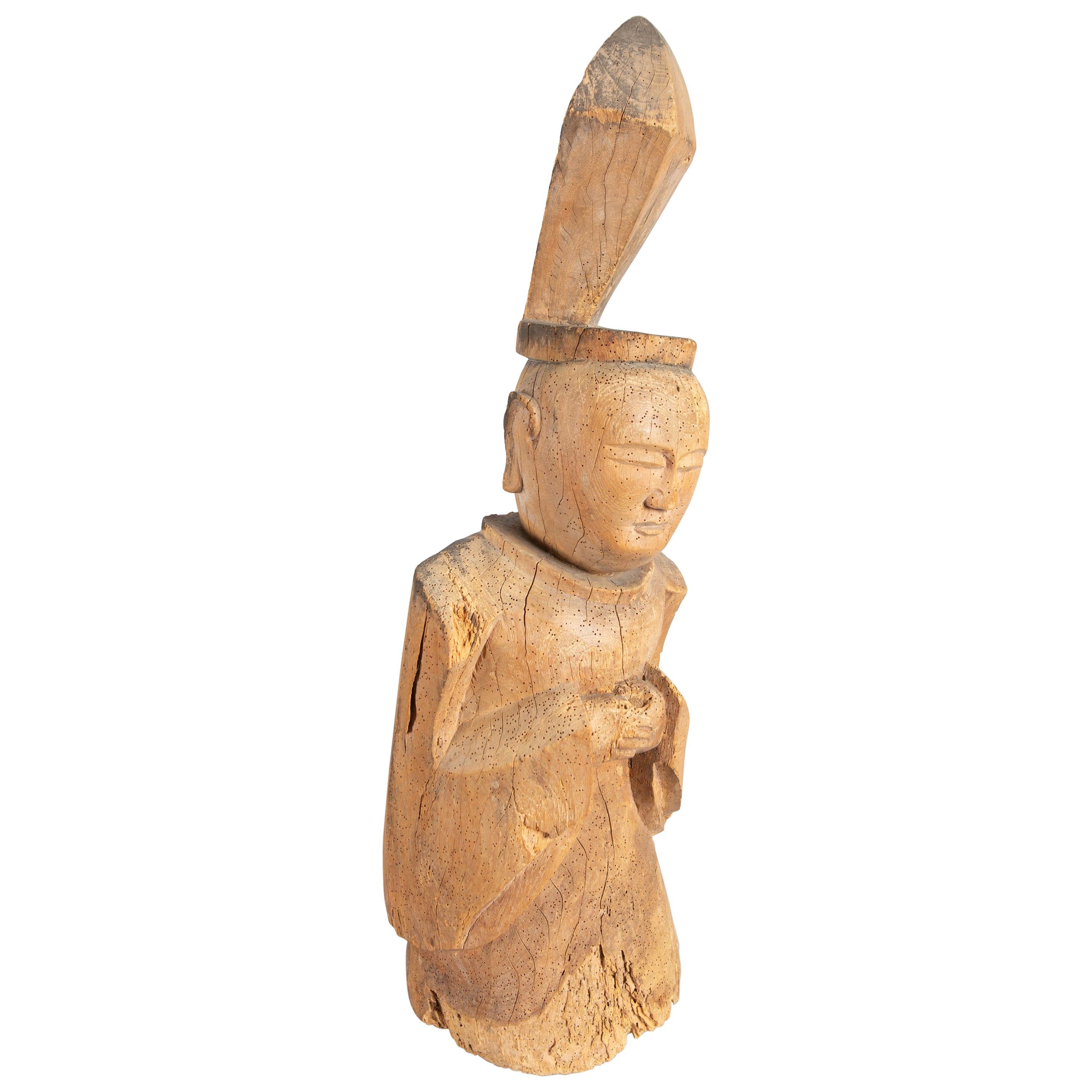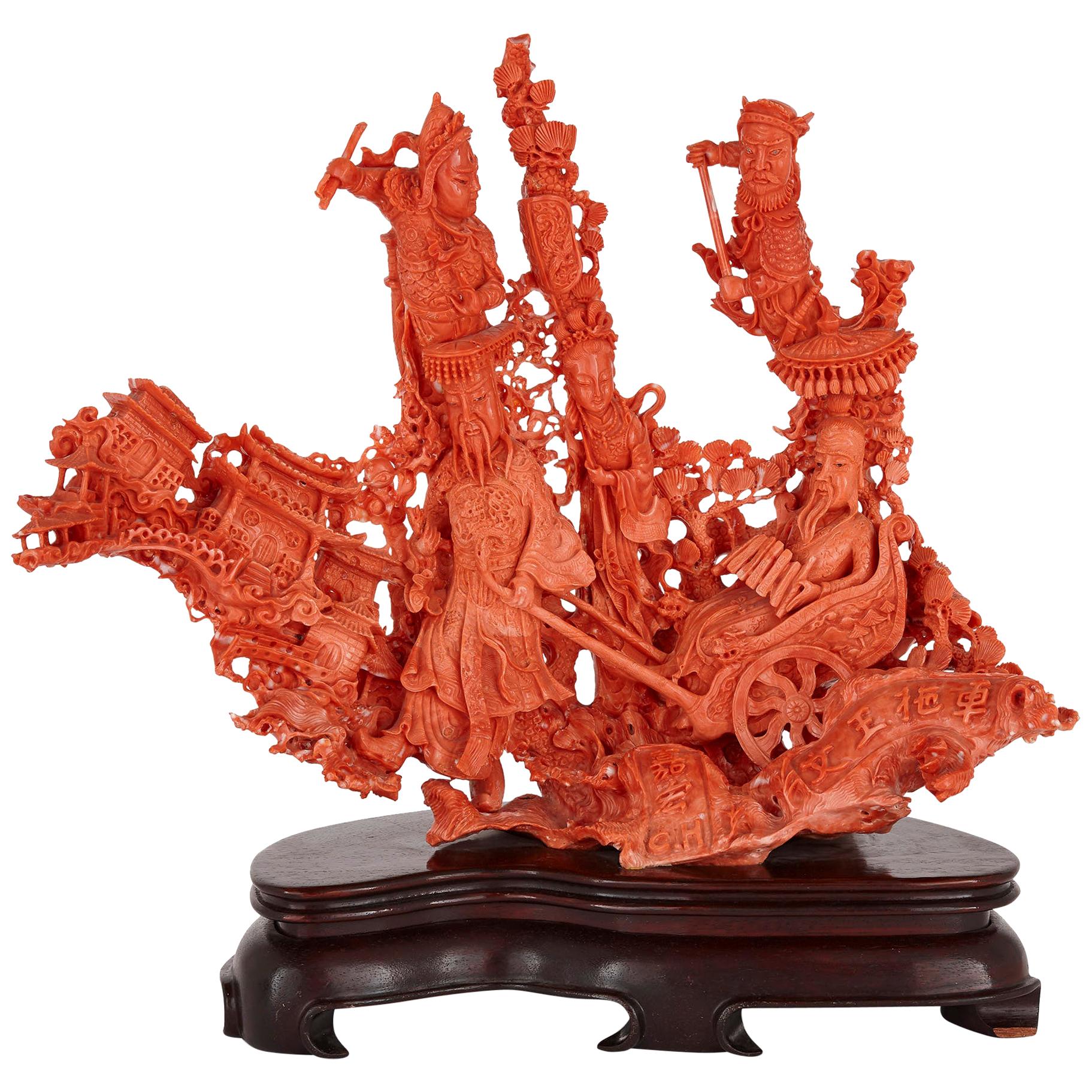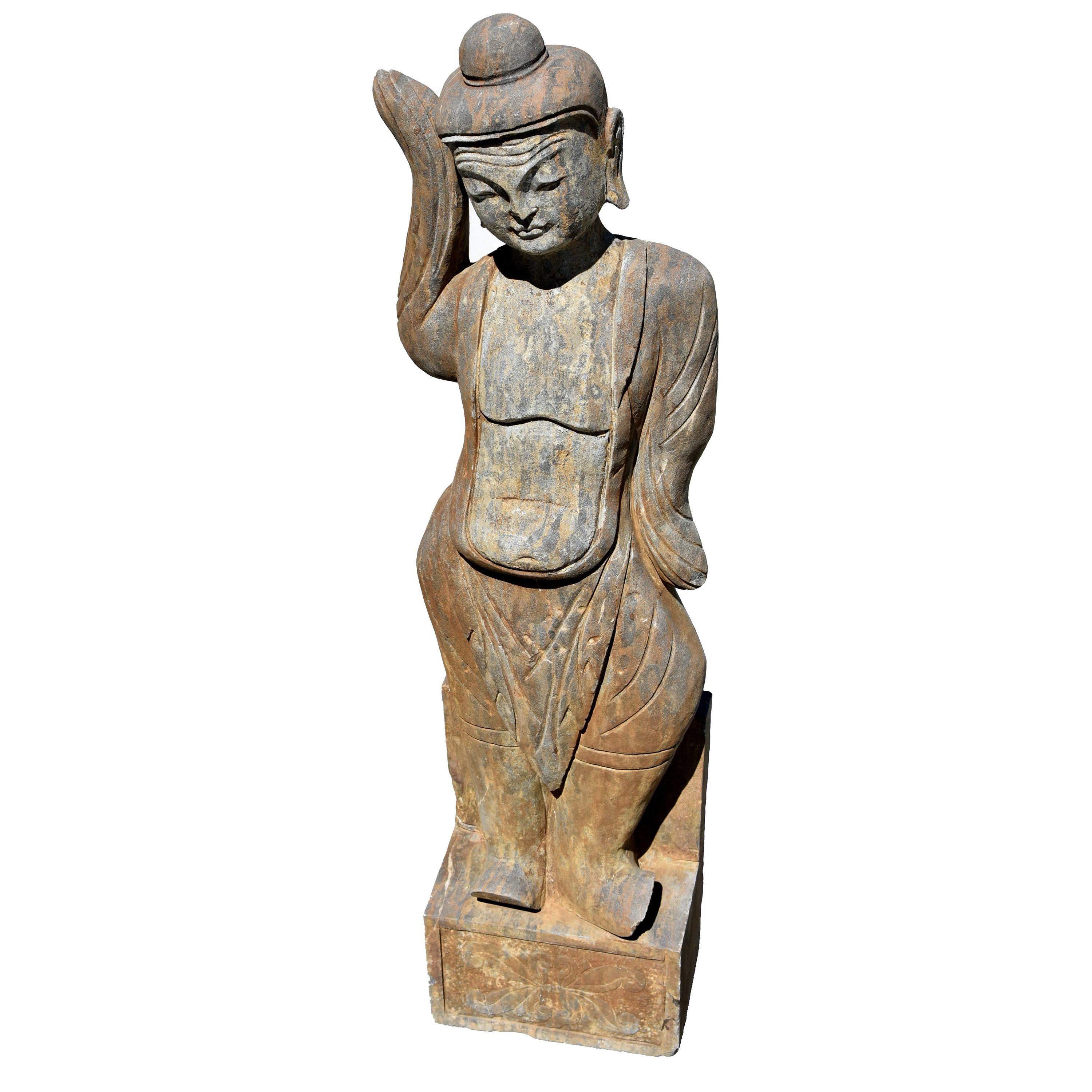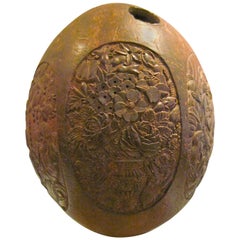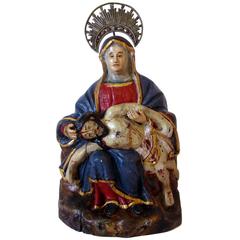
Indo-Portuguese Piedad
View Similar Items
1 of 9
Indo-Portuguese Piedad
About the Item
- Dimensions:Height: 11.03 in (28 cm)Width: 6.3 in (16 cm)Depth: 3.55 in (9 cm)
- Materials and Techniques:
- Place of Origin:
- Period:
- Date of Manufacture:18th Century
- Condition:Wear consistent with age and use.
- Seller Location:Fossano, IT
- Reference Number:1stDibs: LU148124883573
You May Also Like
- Indo-Chinese Burmese Figural Sculpture, Late CenturyLocated in Pasadena, CAThis is an unusually large Burmese mounted Royal Figure or Nat that dates to the late 19th century or early 20th century. The figural group retains all of its original carved element...Category
Antique Late 19th Century Indian Folk Art Sculptures and Carvings
MaterialsPaint, Teak
$1,975 Sale Price39% Off - Rare Indo-Portuguese Carved Iconographic CoconutLocated in Philadelphia, PAThis rare and unusual object is a hand-carved coconut done in the Indian city of Goa, during the era of Portuguese colonization. The workmanship of the exquisite carving is superb in...Category
Antique Late 18th Century Indian More Asian Art, Objects and Furniture
MaterialsCoconut
- 18 C, Indo-Portuguese Vargueno Mini CabinetLocated in Dallas, TXPresenting a fabulously rare 18c Indo-Portuguese Vargueno mini cabinet. Extremely rare, highly important and desirable colonial piece ! It is an In...Category
Antique Late 18th Century Indian Anglo-Indian Decorative Boxes
MaterialsBrass
- 16th-Century Indo-Portuguese Colonial Mother-of-pearl Gujarat CasketLocated in Amsterdam, NLAn exceptional Indo-Portuguese colonial mother-of-pearl veneered casket with silver mounts India, Gujarat, 2nd half of the 16th century, the silver mounts Goa or probably Lisbon Measures: H. 16 x W. 24.6 x D. 16.1 cm An exceptional Gujarati casket with a rectangular box and truncated pyramidal lid (with slopes on each side and a flat top) made from exotic wood, probably teak (Tectona grandis), covered with a mother-of-pearl mosaic. The tesserae, cut from the shell of the green turban sea snail (Turbo marmoratus, a marine gastropod) in the shape of fish scales, are pinned to the wooden structure with silver ball-headed nails. The casket is set on bracket feet on the corners. The masterfully engraved decoration of the silver mounts follows the most refined and erudite Mannerist repertoire of rinceaux and ferroneries dating from the mid-16th century. The high quality and refinement of the silver mounts and, likewise, the silver nails that replaced the original brass pins used to hold the mother-of-pearl tesserae in place indicate the work of a silversmith probably working in Lisbon in the second half of the 16th century. The Indian origin of this production, namely from Cambay (Khambhat) and Surat in the present state of Gujarat in north India, is, as for the last three decades, consensual and fully demonstrated, not only by documentary and literary evidence - such as descriptions, travelogues and contemporary archival documentation - but also by the survival in situ of 16th-century wooden structures covered in mother-of-pearl tesserae. A fine example is a canopy decorating the tomb (dargah) of the Sufi saint, Sheik Salim Chisti (1478-1572) in Fatehpur Sikri in Agra district in the state of Uttar Pradesh, north India. This is an artistic production, geometric in character and Islamic in nature, where usually the mother-of-pearl tesserae form complex designs of fish scales or, similar to the dishes also made using the same technique, with the thin brass sheets and pins, stylized lotus flowers. The truncated pyramidal shape corresponds, like their contemporary tortoiseshell counterparts also made in Gujarat, to a piece of furniture used in the Indian subcontinent within the Islamic world prior to the arrival of the first Portuguese. This shape, in fact, is very old and peculiar to East-Asian caskets, chests or boxes used to contain and protect Buddhist texts, the sutras. A similar chest is the famous and large reliquary chest from Lisbon cathedral that once contained the relics of the city's patron saint, Saint Vincent. Both match in shape, having the same kind of socle or pedestal and bracket feet, and in their engraved silver mountings, featuring the same type of refined, erudite decoration. Their differences lie in the silver borders that frame the entire length of the edges of the chest (both the box and the lid), pinned with silver nails, and on the lock plate, shaped like a coat of arms in the Lisbon example. Given the exceptional dimensions of the reliquary casket...Category
Antique 16th Century Indian Jewelry Boxes
MaterialsSilver
- Fabri Sculptural TableBy John BrevardLocated in Coral Gables, FLThis unique piece combines iron (a product of our tectonic era) and petrified wood (a timeless material with memory of the past). This series was created by John Brevard in 2010. ...Category
2010s American Aesthetic Movement Sculptures and Carvings
MaterialsIron
$76,950 - 20th Jade Sculpture with Nine Dragon Boat **** 16 Foots Large***Located in Miami, FLChinese Scrib, but handcrafted in Thailand. Sixteen feet long. Rosewood base. The sculptors of this enormous boat made of jade. You will admire the details of this vessel. The dragon is the ultimate symbol of auspiciousness. It is the most important symbol in both Feng Shui and in Chinese folklore. It's most powerful when displayed in the east sector of your home, office or location of the piece. This dragon jade boat...Category
Early 20th Century Thai Figurative Sculptures
MaterialsJade
$48,600 Sale Price40% Off
Recently Viewed
View AllMore Ways To Browse
Antique Bone Carving Antiques
Antique Bone Carvings
Jesus With Cross
Bone Carved Asian
Indo Portuguese
Indo Portuguese Furniture
Indo Portuguese Antique Furniture
Jesus Face Sculpture
Goa Furniture
Antique Furniture Goa
Goa Antique Furniture
Indo Sculptures
Goa Portuguese
Tall Stone Sculptures
Japanese Metal Antique
Relief Carving Wood
Antique Basin With Stone
Tall Iron Sculpture
